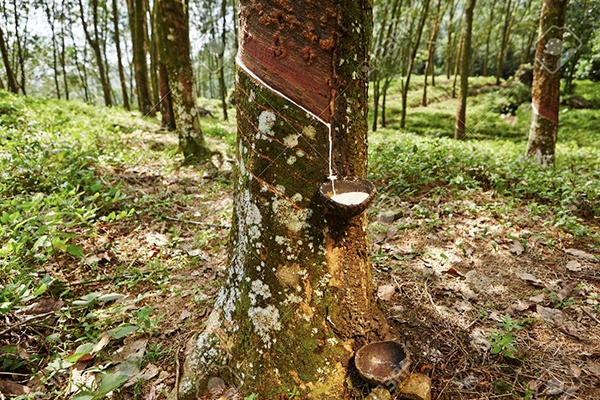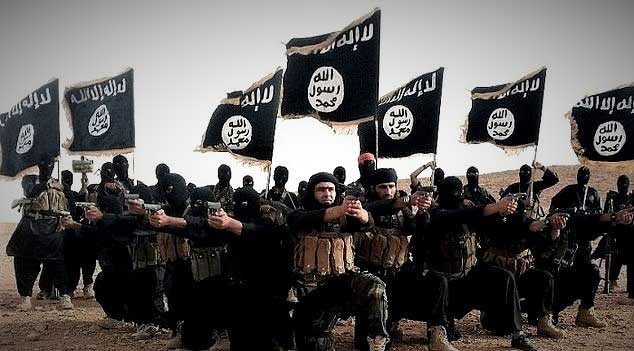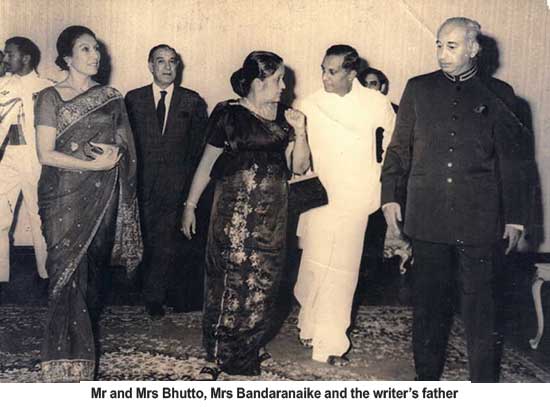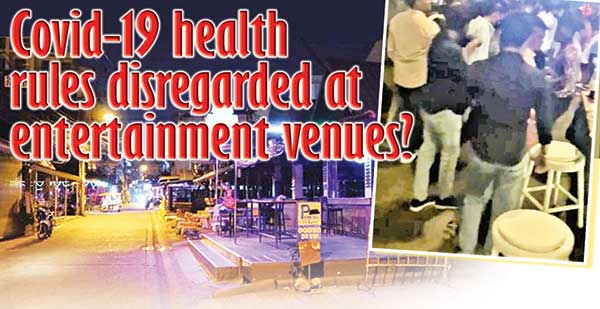Features
Sorry state of rubber industry in SL

By Dr. L. M. K. Tillekeratne
Former Director RRI, UNIDO expert in Rubber Processing
Rubber plantation was established in Sri Lanka over the past nearly 10 decades for extracting latex for the manufacture of raw rubber grades namely Ribbed Smoked Sheets (RSS), latex crepe, technically specified rubber (TSR), the starting materials for the manufacture of moulded products such as tyres. Rubber latex in concentrated form is used to manufacture foam rubber and dipped products like household and medical gloves, condoms and balloons. With the spread of diseases such as AIDS, the demand for the natural rubber based medical gloves and condoms started rising rapidly in the mid-1980s.
Due to COVID-19, which is fast spreading all over the world, the demand for medical gloves used for examining patients and household gloves used in supermarkets, etc., is growing at an unexpected high rate, thereby increasing the demand for concentrated rubber latex. This trend is expected to rise further at least for the next two to three years until an effective vaccine is found for COVID-19; the developed nations like Japan, the US and some European countries have already decided to live with the Covid-19 next couple of years until an effective vaccine is developed. Hence if the rubber plantations in the country start following proven agro-management practices introduced by the RRI, without engaging in extracting latex over in excess of what is biologically available trees by using harmful extraction techniques such as stimulation, they will be able to reap benefits of this rising demand for latex. However, if trees are exploited above 100% efficiency level, the way some of the plantations are doing today, the day the rubber industry disappears from this country is not far off.
The main reason for some of the rubber estates finding it difficult to remain viable today is due to the drop in productivity in kg/ha/yr by over 50% during the last half decade to about 770 Kg/ha/yr, and it is declining further due to the adoption of incorrect agro management techniques totally rejected by the RRI. The countrywide productivity in 2013 was over 1,200 Kg/ha/yr and in 2018 it has dropped down to 774 kg/ha/yr purely due to bad management; this is not due to infertility of the soil or due to poor weather conditions.
It should be mentioned here with appreciation that some rubber plantation companies earn high profits purely as they followthe RRI recommended agro-management practices. They have also been able to show that the rain guards introduced by the RRI to minimise crop loss caused by rain interference on tapping have helped record an annual crop increase of over 30%. Now they are engaged in low frequency d4 or d5 tapping trials on their own, thereby vastly reducing the tapper shortage in their estates.
Harvesting of latex from the rubber tree is done by tapping the bark using tapping intensities recommended by the RRI. The S2d2 tapping system adopted in most part of the island is called the tapping system of 100% efficiency. This 100% efficient tapping technique is capable of giving biologically possible highest yield from a rubber tree over a period of over 24years. If attempts are made to over-extract latex over and above this recommendation, with the help of rash techniques tapping, panels dry up (TPD) thereby making the tree worthless. Further, due to the high intensity tapping the productive period of the tree too is reduced. Hence, in order to obtain satisfactory returns on the investment it is essential to adopt the RRI-approved techniques.
But, it is very sad to note that in most of the RPCC-managed estates, unwarranted bad extraction techniques to extract more latex from the trees (far above what is biologically possible to extract) is practiced and hence today in most of the estates the percentage of Tapping Panel Dried trees (TPD) present is over 50%. If proper agro practices are followed, this percentage should be below10%. In other words, more than half the healthy trees in such estates are without a bark to yield even a drop of latex. Virtually they are like culled cows in a dairy farm. Unfortunately, when you travel on the Colombo Ratnapura road or on the Colombo Matara highway, right along the road you see rubber estates with healthy trees with a big canopy. But, how many of you are aware that most of them are useless trees not yielding any latex due to the above reason.
There has been a proposal of growing other crops on rubber estates. Then what will happen to the rubber products industry earning over US $ 1.25 Bn annually? If such estates are used for other crops which demand more inputs and better care are also subjected to poor agro-management, can they earn profits? Then, what will be the damage caused to the environment?
If the RPCC-managed estates are economically unviable, it means they have not been properly managed; important inputs like fertilizer have been curtailed and exploitation has been intensified by totally ignoring the recommendations of the RRI to achieve short term high yields, thereby lowering productivity to unexpectedly low uneconomical levels. They have been trapped in a vicious circle. Therefore, action must be taken as early as possible to prevent the rubber industry from disappearing from our soil. If not, over 250,000 unskilled workers engaged in estates and over40 to 50,000 semi-skilled and skilled workers employed in the rubber products industry will have to find employment elsewhere.
Another factor that has contributed to this situation is the communication gap between the RRI scientists and the RPCC-managed plantation. The valuable rubber bulletin published twice a year compiling all research findings of scientists and economic analysis of the industry done by reputed economists both local and overseas has not been published since mid-2018. Regional meetings conducted to discuss new developments in the industry and on the plantation and the problems faced by the estate managers in their management activities have not been conducted for years after setting up of the plantation rehabilitation and monitoring committee by the Ministry of Plantation Industries. As a result, not only the RPCC but also the Rubber Development Department officers have been doing things the way they want without heeding the RRI recommendations. Scientific committee meetings conducted by the RRI for planters and the RDD officers have not been held for a long time. A case in point is the present clone balance of rubber planted in the country. Without heeding the pressing need to maintain a uniform plantation of five top quality group 1 clones namely RRIC 100, 102, 121 and Pb 216 and 28/59 covering 20% of the total extent from each, replanting has been done with whatever the clone that is easy to access in their nurseries. This recommendation was made by all the IRRDB member countries in 1986 to avoid mass destruction of the entire rubber plantation or a very high percentage of the total rubber extent in the country in case of a disease pandemic effecting one of the clones starts to spread in the plantation like what happened in mid-1980s to the clone RRIC 103.
A policy decision was taken by the MPI in 1995 to eliminate the low yielding clone Pb 86 from the plantation by destroying even the bud wood nurseries controlled by the RDD and RPCC. According to statistics published following a countrywide survey carried out by the RRI in 2012, even 15 years after banning the propagation of Pb 86 clone, there is still 29% Pb 86 on plantations. This means neither the RPCC nor the RDD has followed the ruling given by the MPI to eliminate this low yielder from the plantation. This factor also has contributed to the declining yield of the rubber plantation in the country. Further, the RRIC 121 population has reached 33% of the total extent, which is slightly more than the recommended norm. Hence, a decision has been taken by the MPI on the advice of the RRI to reintroduce RRIC 100 clone to the plantation and also to discourage planting 121 for some time.
According to the survey carried out by the RRI in 2020, the clone population in the country is in a worse situation now. According to this survey results RRIC 121 population in the whole country which includes SHH has risen to unexpectedly high level of 73% of the total extent while RRIC 100 population is stagnating at a low level of only 8%. Also, the group 1 recommended RRIC 102 clone population in the country is insignificant. A joint effort should be made by the RRI with RPCC and the RDD, to bring the clone balance in the country to a satisfactory level. If a pathogen affecting the clone RRIC 102 enters the Sri Lankan plantations, we may have to make a greater effort than that by the government to control COVID-19, to save the rubber estates.
Therefore, if the new government is to develop the rubber industry, it must first ensure a close interaction among the RRI and the RPCC, the RDD regional offices and resume inspections by the RRI officers in RPCC estates without further delay to identify the wrong procedures followed by them and advise them to adopt remedial measures. RRI must take immediate action to publish its bulletin regularly as in the past to educate farmers on new research developments. One must keep in mind that the damage done by the RPCC by following unacceptable exploitation techniques to draw latex from the trees far above what is biologically available, must be stopped immediately for the sustainability of this valuable industry highly beneficial to the economy of Sri Lanka and also equally to the environment of the country.
- News Advertiesment
See Kapruka’s top selling online shopping categories such as Toys, Grocery, Flowers, Birthday Cakes, Fruits, Chocolates, Clothing and Electronics. Also see Kapruka’s unique online services such as Money Remittence,News, Courier/Delivery, Food Delivery and over 700 top brands. Also get products from Amazon & Ebay via Kapruka Gloabal Shop into Sri Lanka.
Features
Islamophobia and the threat to democratic development

There’s an ill more dangerous and pervasive than the Coronavirus that’s currently sweeping Sri Lanka. That is the fear to express one’s convictions. Across the public sector of the country in particular many persons holding high office are stringently regulating and controlling the voices of their consciences and this bodes ill for all and the country.
The corrupting impact of fear was discussed in this column a couple of weeks ago when dealing with the military coup in Myanmar. It stands to the enduring credit of ousted Myanmarese Head of Government Aung San Suu Kyi that she, perhaps for the first time in the history of modern political thought, singled out fear, and not power, as the principal cause of corruption within the individual; powerful or otherwise.
To be sure, power corrupts but the corrupting impact of fear is graver and more devastating. For instance, the fear in a person holding ministerial office or in a senior public sector official, that he would lose position and power as a result of speaking out his convictions and sincere beliefs on matters of the first importance, would lead to a country’s ills going unaddressed and uncorrected.
Besides, the individual concerned would be devaluing himself in the eyes of all irrevocably and revealing himself to be a person who would be willing to compromise his moral integrity for petty worldly gain or a ‘mess of pottage’. This happens all the while in Lankan public life. Some of those who have wielded and are wielding immense power in Sri Lanka leave very much to be desired from these standards.
It could be said that fear has prevented Sri Lanka from growing in every vital respect over the decades and has earned for itself the notoriety of being a directionless country.
 All these ills and more are contained in the current controversy in Sri Lanka over the disposal of the bodies of Covid victims, for example. The Sri Lankan polity has no choice but to abide by scientific advice on this question. Since authorities of the standing of even the WHO have declared that the burial of the bodies of those dying of Covid could not prove to be injurious to the wider public, the Sri Lankan health authorities could go ahead and sanction the burying of the bodies concerned. What’s preventing the local authorities from taking this course since they claim to be on the side of science? Who or what are they fearing? This is the issue that’s crying out to be probed and answered.
All these ills and more are contained in the current controversy in Sri Lanka over the disposal of the bodies of Covid victims, for example. The Sri Lankan polity has no choice but to abide by scientific advice on this question. Since authorities of the standing of even the WHO have declared that the burial of the bodies of those dying of Covid could not prove to be injurious to the wider public, the Sri Lankan health authorities could go ahead and sanction the burying of the bodies concerned. What’s preventing the local authorities from taking this course since they claim to be on the side of science? Who or what are they fearing? This is the issue that’s crying out to be probed and answered.
Considering the need for absolute truthfulness and honesty on the part of all relevant persons and quarters in matters such as these, the latter have no choice but to resign from their positions if they are prevented from following the dictates of their consciences. If they are firmly convinced that burials could bring no harm, they are obliged to take up the position that burials should be allowed.
If any ‘higher authority’ is preventing them from allowing burials, our ministers and officials are conscience-bound to renounce their positions in protest, rather than behave compromisingly and engage in ‘double think’ and ‘double talk’. By adopting the latter course they are helping none but keeping the country in a state of chronic uncertainty, which is a handy recipe for social instabiliy and division.
In the Sri Lankan context, the failure on the part of the quarters that matter to follow scientific advice on the burials question could result in the aggravation of Islamophobia, or hatred of the practitioners of Islam, in the country. Sri Lanka could do without this latter phobia and hatred on account of its implications for national stability and development. The 30 year war against separatist forces was all about the prevention by military means of ‘nation-breaking’. The disastrous results for Sri Lanka from this war are continuing to weigh it down and are part of the international offensive against Sri Lanka in the UNHCR.
However, Islamophobia is an almost world wide phenomenon. It was greatly strengthened during Donald Trump’s presidential tenure in the US. While in office Trump resorted to the divisive ruling strategy of quite a few populist authoritarian rulers of the South. Essentially, the manoeuvre is to divide and rule by pandering to the racial prejudices of majority communities.
It has happened continually in Sri Lanka. In the initial post-independence years and for several decades after, it was a case of some populist politicians of the South whipping-up anti-Tamil sentiments. Some Tamil politicians did likewise in respect of the majority community. No doubt, both such quarters have done Sri Lanka immeasurable harm. By failing to follow scientific advice on the burial question and by not doing what is right, Sri Lanka’s current authorities are opening themselves to the charge that they are pandering to religious extremists among the majority community.
The murderous, destructive course of action adopted by some extremist sections among Muslim communities world wide, including of course Sri Lanka, has not earned the condemnation it deserves from moderate Muslims who make-up the preponderant majority in the Muslim community. It is up to moderate opinion in the latter collectivity to come out more strongly and persuasively against religious extremists in their midst. It will prove to have a cementing and unifying impact among communities.
It is not sufficiently appreciated by governments in the global South in particular that by voicing for religious and racial unity and by working consistently towards it, they would be strengthening democratic development, which is an essential condition for a country’s growth in all senses.
A ‘divided house’ is doomed to fall; this is the lesson of history. ‘National security’ cannot be had without human security and peaceful living among communities is central to the latter. There cannot be any ‘double talk’ or ‘politically correct’ opinions on this question. Truth and falsehood are the only valid categories of thought and speech.
Those in authority everywhere claiming to be democratic need to adopt a scientific outlook on this issue as well. Studies conducted on plural societies in South Asia, for example, reveal that the promotion of friendly, cordial ties among communities invariably brings about healing among estranged groups and produces social peace. This is the truth that is waiting to be acted upon.
Features
Pakistan’s love of Sri Lanka

By Sanjeewa Jayaweera
It was on 3rd January 1972 that our family arrived in Karachi from Moscow. Our departure from Moscow had been delayed for a few weeks due to the military confrontation between Pakistan and India. It ended on 16th December 1971. After that, international flights were not permitted for some time.
The contrast between Moscow and Karachi was unbelievable. First and foremost, Moscow’s temperature was near minus 40 degrees centigrade, while in Karachi, it was sunny and a warm 28 degrees centigrade. However, what struck us most was the extreme warmth with which the airport authorities greeted our family. As my father was a diplomat, we were quickly ushered to the airport’s VIP Lounge. We were in transit on our way to Rawalpindi, the airport serving the capital of Islamabad.
We quickly realized that the word “we are from Sri Lanka” opened all doors just as saying “open sesame” gained entry to Aladdin’s cave! The broad smile, extreme courtesy, and genuine warmth we received from the Pakistani people were unbelievable.
This was all to do with Mrs Sirima Bandaranaike’s decision to allow Pakistani aircraft to land in Colombo to refuel on the way to Dhaka in East Pakistan during the military confrontation between Pakistan and India. It was a brave decision by Mrs Bandaranaike (Mrs B), and the successive governments and Sri Lanka people are still enjoying the fruits of it. Pakistan has been a steadfast and loyal supporter of our country. They have come to our assistance time and again in times of great need when many have turned their back on us. They have indeed been an “all-weather” friend of our country.
Getting back to 1972, I was an early beneficiary of Pakistani people’s love for Sri Lankans. I failed the entrance exam to gain entry to the only English medium school in Islamabad! However, when I met the Principal, along with my father, he said, “Sanjeewa, although you failed the entrance exam, I will this time make an exception as Sri Lankans are our dear friends.” After that, the joke around the family dinner table was that I owed my education in Pakistan to Mrs B!
At school, my brother and I were extended a warm welcome and always greeted “our good friends from Sri Lanka.” I felt when playing cricket for our college; our runs were cheered more loudly than of others.
One particular incident that I remember well was when the Embassy received a telex from the Foreign inistry. It requested that our High Commissioner seek an immediate meeting with the Prime Minister of Pakistan, Mr Zulifikar Ali Bhutto (ZB), and convey a message from Mrs B. The message requested that an urgent shipment of rice be dispatched to Sri Lanka as there would be an imminent rice shortage. As the Ambassador was not in the station, the responsibility devolved on my father.
It usually takes about a week or more to get an audience with the Prime Minister (PM) of a foreign country due to their busy schedule. However, given the urgency, my father spoke to the Foreign Ministry’s Permanent Sectary, who fortunately was our neighbour and sought an urgent appointment. My father received a call from the PM’s secretary around 10 P.M asking him to come over to the PM’s residence. My father met ZB around midnight. ZB was about to retire to bed and, as such, was in his pyjamas and gown enjoying a cigar! He had greeted my father and had asked, “Mr Jayaweera, what can we do for great friend Madam Bandaranaike?. My father conveyed the message from Colombo and quietly mentioned that there would be riots in the country if there is no rice!
ZB had immediately got the Food Commissioner of Pakistan on the line and said, “I want a shipload of rice to be in Colombo within the next 72 hours!” The Food Commissioner reverted within a few minutes, saying that nothing was available and the last export shipment had left the port only a few hours ago to another country. ZB had instructed to turn the ship around and send it to Colombo. This despite protests from the Food Commissioner about terms and conditions of the Letter of Credit prohibiting non-delivery. Sri Lanka got its delivery of rice!
The next was the visit of Mrs B to Pakistan. On arrival in Rawalpindi airport, she was given a hero’s welcome, which Pakistan had previously only offered to President Gaddafi of Libya, who financially backed Pakistan with his oil money. That day, I missed school and accompanied my parents to the airport. On our way, we witnessed thousands of people had gathered by the roadside to welcome Mrs B.
When we walked to the airport’s tarmac, thousands of people were standing in temporary stands waving Sri Lanka and Pakistan flags and chanting “Sri Lanka Pakistan Zindabad.” The noise emanating from the crowd was as loud and passionate as the cheering that the Pakistani cricket team received during a test match. It was electric!
I believe she was only the second head of state given the privilege of addressing both assemblies of Parliament. The other being Gaddafi. There was genuine affection from Mrs B amongst the people of Pakistan.
I always remember the indefatigable efforts of Mr Abdul Haffez Kardar, a cabinet minister and the President of the Pakistan Cricket Board. From around 1973 onwards, he passionately championed Sri Lanka’s cause to be admitted as a full member of the International Cricket Council (ICC) and granted test status. Every year, he would propose at the ICC’s annual meeting, but England and Australia’s veto kept us out until 1981.
I always felt that our Cricket Board made a mistake by not inviting Pakistan to play our inaugural test match. We should have appreciated Mr Kardar and Pakistan’s efforts. In 1974 the Pakistan board invited our team for a tour involving three test matches and a few first-class games. Most of those who played in our first test match was part of that tour, and no doubt gained significant exposure playing against a highly talented Pakistani team.
Several Pakistani greats were part of the Pakistan and India team that played a match soon after the Central Bank bomb in Colombo to prove that it was safe to play cricket in Colombo. It was a magnificent gesture by both Pakistan and India. Our greatest cricket triumph was in Pakistan when we won the World Cup in 1996. I am sure the players and those who watched the match on TV will remember the passionate support our team received that night from the Pakistani crowd. It was like playing at home!
I also recall reading about how the Pakistani government air freighted several Multi Barrell artillery guns and ammunition to Sri Lanka when the A rmy camp in Jaffna was under severe threat from the LTTE. This was even more important than the shipload of rice that ZB sent. This was crucial as most other countries refused to sell arms to our country during the war.
Time and again, Pakistan has steadfastly supported our country’s cause at the UNHCR. No doubt this year, too, their diplomats will work tirelessly to assist our country.
We extend a warm welcome to Mr Imran Khan, the Prime Minister of Pakistan. He is a truly inspirational individual who was undoubtedly an excellent cricketer. Since retirement from cricket, he has decided to get involved in politics, and after several years of patiently building up his support base, he won the last parliamentary elections. I hope that just as much as he galvanized Sri Lankan cricketers, his political journey would act as a catalyst for people like Kumar Sangakkara and Mahela Jayawardene to get involved in politics. Cricket has been called a “gentleman’s game.” Whilst politics is far from it!.
Features
Covid-19 health rules disregarded at entertainment venues?

Believe me, seeing certain videos, on social media, depicting action, on the dance floor, at some of these entertainment venues, got me wondering whether this Coronavirus pandemic is REAL!
To those having a good time, at these particular venues, and, I guess, the management, as well, what the world is experiencing now doesn’t seem to be their concerned.
Obviously, such irresponsible behaviour could create more problems for those who are battling to halt the spread of Covid-19, and the new viriant of Covid, in our part of the world.
The videos, on display, on social media, show certain venues, packed to capacity – with hardly anyone wearing a mask, and social distancing…only a dream..
How can one think of social distancing while gyrating, on a dance floor, that is over crowded!
If this trend continues, it wouldn’t be a surprise if Coronavirus makes its presence felt…at such venues.
And, then, what happens to the entertainment scene, and those involved in this field, especially the musicians? No work, whatsoever!
Lots of countries have closed nightclubs, and venues, where people gather, in order to curtail the spread of this deadly virus that has already claimed the lives of thousands.
Thailand did it and the country is still having lots of restrictions, where entertainment is concerned, and that is probably the reason why Thailand has been able to control the spread of the Coronavirus.
With a population of over 69 million, they have had (so far), a little over 25,000 cases, and 83 deaths, while we, with a population of around 21 million, have over 80,000 cases, and more than 450 deaths.
I’m not saying we should do away with entertainment – totally – but we need to follow a format, connected with the ‘new normal,’ where masks and social distancing are mandatory requirements at these venues. And, dancing, I believe, should be banned, at least temporarily, as one can’t maintain the required social distance, while on the dance floor, especially after drinks.
Police spokesman DIG Ajith Rohana keeps emphasising, on TV, radio, and in the newspapers, the need to adhere to the health regulations, now in force, and that those who fail to do so would be penalised.
He has also stated that plainclothes officers would move around to apprehend such offenders.
Perhaps, he should instruct his officers to pay surprise visits to some of these entertainment venues.
He would certainly have more than a bus load of offenders to be whisked off for PCR/Rapid Antigen tests!
I need to quote what Dr. H.T. Wickremasinghe said in his article, published in The Island of Tuesday, February 16th, 2021:
“…let me conclude, while emphasising the need to continue our general public health measures, such as wearing masks, social distancing, and avoiding crowded gatherings, to reduce the risk of contact with an infected person.
“There is no science to beat common sense.”
But…do some of our folks have this thing called COMMON SENSE!










